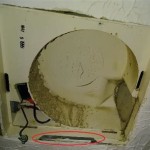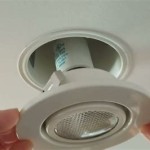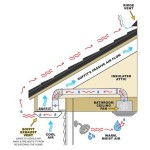Standard Bathroom Wall Cabinet Depth: A Comprehensive Guide
Bathroom wall cabinets are essential components of bathroom design, providing valuable storage space while minimizing the footprint of the fixtures on the floor. One of the most critical considerations when selecting bathroom wall cabinets is the depth of the unit. Proper cabinet depth ensures functionality, accessibility, and aesthetic harmony within the bathroom space. Understanding standard depths and their implications is crucial for effective bathroom design and renovation projects.
The depth of a bathroom wall cabinet refers to the distance from the front of the cabinet to the back, essentially how far it extends out from the wall. This dimension directly influences the amount of storage space available inside the cabinet, as well as how much the cabinet protrudes into the room. Selecting the correct depth requires balancing storage needs with the practicalities of bathroom size and traffic flow.
While customization is always an option, most manufacturers adhere to certain standard depths for bathroom wall cabinets, making it easier for buyers to find readily available solutions. Recognizing these standard depths can streamline the selection process and ensure the chosen cabinets integrate seamlessly into the intended bathroom layout.
Understanding Standard Depth Measurements
The most common depth ranges for bathroom wall cabinets fall within a relatively narrow spectrum. These standard depths have evolved over time to accommodate typical bathroom items, from toiletries and medications to towels and cleaning supplies. Deviation from these standards can lead to either insufficient storage or an overly cramped and unwieldy bathroom environment.
A prevalent depth for bathroom wall cabinets is 12 inches. This depth offers a practical balance between storage capacity and space conservation. A 12-inch deep cabinet can comfortably accommodate most standard-sized toiletries, such as shampoo bottles, toothpaste tubes, and shaving cream cans. It also leaves enough room to store folded towels and other larger bathroom essentials. 12 inch depth is a safe bet for most average sized bathrooms.
Another frequently encountered depth is 8 inches. Cabinets with this shallower depth are typically used in smaller bathrooms or powder rooms where space is at a premium. While an 8-inch depth offers less storage capacity than a 12-inch depth, it provides sufficient space for storing smaller items like toothbrushes, makeup, and smaller bottles or jars. 8 inch wall-mounted cabinets can also serve as decorative elements.
Occasionally, bathroom wall cabinets are manufactured with depths of 16 inches or more. These deeper cabinets are typically reserved for larger bathrooms where ample storage is required. Deeper cabinets are useful for storing bulky items such as extra blankets, larger towels, or a greater quantity of bathroom supplies. However, it's crucial to consider the overall impact of these deeper cabinets on the bathroom's spatial dynamics, as they can make the room feel more confined if not planned correctly.
It's important to note that these are just general guidelines, and the actual depth of a bathroom wall cabinet can vary slightly between manufacturers. Always double-check the product specifications before making a purchase to ensure that the chosen cabinet depth aligns with your specific requirements.
Factors Influencing Cabinet Depth Selection
Choosing the appropriate depth for bathroom wall cabinets is a multifaceted decision that considers various factors, including bathroom size, storage needs, and the overall aesthetic of the space. Thoughtful consideration of these aspects ensures the selected cabinets are both functional and visually harmonious with the bathroom's design.
The size of the bathroom is a primary determinant of the acceptable cabinet depth. In smaller bathrooms, space is often limited, and cabinets with shallower depths are preferred to maximize the usable area. A deep cabinet in a small bathroom can create a sense of claustrophobia and impede movement within the space. Conversely, in larger bathrooms, deeper cabinets may be more appropriate to provide ample storage without compromising the room's spacious feel.
Storage needs also play a crucial role in determining the ideal cabinet depth. Assess the types and quantities of items that will be stored in the cabinets. If numerous large items, such as stacks of towels or oversized bottles, need to be accommodated, a deeper cabinet is likely necessary. For storing only smaller toiletries, a shallower cabinet may be sufficient.
The overall design and aesthetic of the bathroom should also be taken into account. Deeper cabinets can create a more substantial and visually dominant presence, while shallower cabinets tend to blend more seamlessly into the wall. The style of the cabinets should complement the existing fixtures and décor in the bathroom.
The placement of the cabinet is also a critical factor. A cabinet placed above a toilet or near a doorway may benefit from a shallower depth to avoid obstructing movement. Cabinets placed above a vanity can typically accommodate a greater depth, as the vanity provides a natural buffer zone.
Finally, ease of access should be considered. A very deep cabinet might make it difficult to reach items stored at the back. Consider incorporating adjustable shelves or pull-out organizers to maximize accessibility and storage efficiency.
Practical Considerations and Installation
Beyond simply selecting the appropriate depth, several practical considerations are important for successful bathroom wall cabinet installation. These considerations include ensuring adequate wall support, accounting for plumbing and electrical systems, and adhering to building codes and regulations.
Before installing any wall cabinet, verify the structural integrity of the wall. Bathroom walls are often constructed with drywall or plasterboard, which may not provide sufficient support for heavy cabinets, especially when fully loaded with items. Locating wall studs and securing the cabinets to these studs is crucial for ensuring stability and preventing the cabinet from detaching from the wall. If studs are not in ideal locations, consider using specialized drywall anchors that are designed to bear significant weight. The weight capacity of these anchors should be substantially greater than the expected weight of the cabinet and its contents.
When planning the cabinet installation, carefully account for any existing plumbing or electrical systems within the wall. Pipes and wires can obstruct the installation process and potentially cause damage if inadvertently punctured or severed. Use a stud finder to identify the location of pipes and wires before drilling any holes. It may be necessary to relocate existing plumbing or electrical systems to accommodate the cabinet installation. This work should be performed by a qualified professional.
Adherence to local building codes and regulations is mandatory when installing bathroom wall cabinets. These codes typically specify minimum clearances between the cabinet and other fixtures, such as toilets and sinks. They may also dictate the type of materials that can be used in cabinet construction and installation. Consult with a local building inspector or contractor to ensure that the installation complies with all applicable codes and regulations.
Ensure proper cabinet height. Standard practice is to mount the cabinet so that the bottom is approximately 54 to 72 inches from the floor. This height range allows for comfortable access for most individuals while minimizing the risk of bumping one's head. Adjust these heights based on the height of the primary users of the bathroom.
Finally, consider the impact of the cabinet depth on the overall lighting in the bathroom. A deeper cabinet may cast shadows, especially when installed above a vanity mirror. To mitigate this, consider incorporating under-cabinet lighting or adjusting the placement of existing light fixtures to ensure adequate illumination.
In summary, determining the appropriate depth of bathroom wall cabinets is a crucial aspect of bathroom design. Consideration of bathroom size, storage needs, aesthetic preferences, and practical installation factors are all necessary for ensuring a functional and visually appealing outcome. By carefully evaluating these elements, one can select bathroom wall cabinets that enhance the overall usability and enjoyment of bathroom areas.

Kitchen Bathroom Cabinet Construction Wall Cabinets Part 1

3 Shelf Wall Mounted Bathroom Cabinet Black Bilbao Beliani It

Wall Cabinet Size Chart Builders Surplus

Kitchen Wall Cabinet Size Chart Builders Surplus Cabinets Sizes Dimensions

Dracelo 23 In W X 7 38 D 64 25 H Espresso Bathroom Over The Toilet Wall Cabinet 578865295 Home Depot

Reviews For Veikous 23 6 In W X 7 5 D 30 4 H Oversized Bathroom Storage Wall Cabinet With Adjustable Shelves And Mirror Espresso Pg 3 The Home Depot

Wall Cabinets Worthington White To Go

Dracelo 23 In W X 7 38 D 64 25 H Espresso Bathroom Over The Toilet Wall Cabinet 578865295 Home Depot

Guide To Selecting Bathroom Cabinets

What Is The Standard Depth Of A Kitchen Cabinet Dimensions Cabinets Height Wall Units
Related Posts







